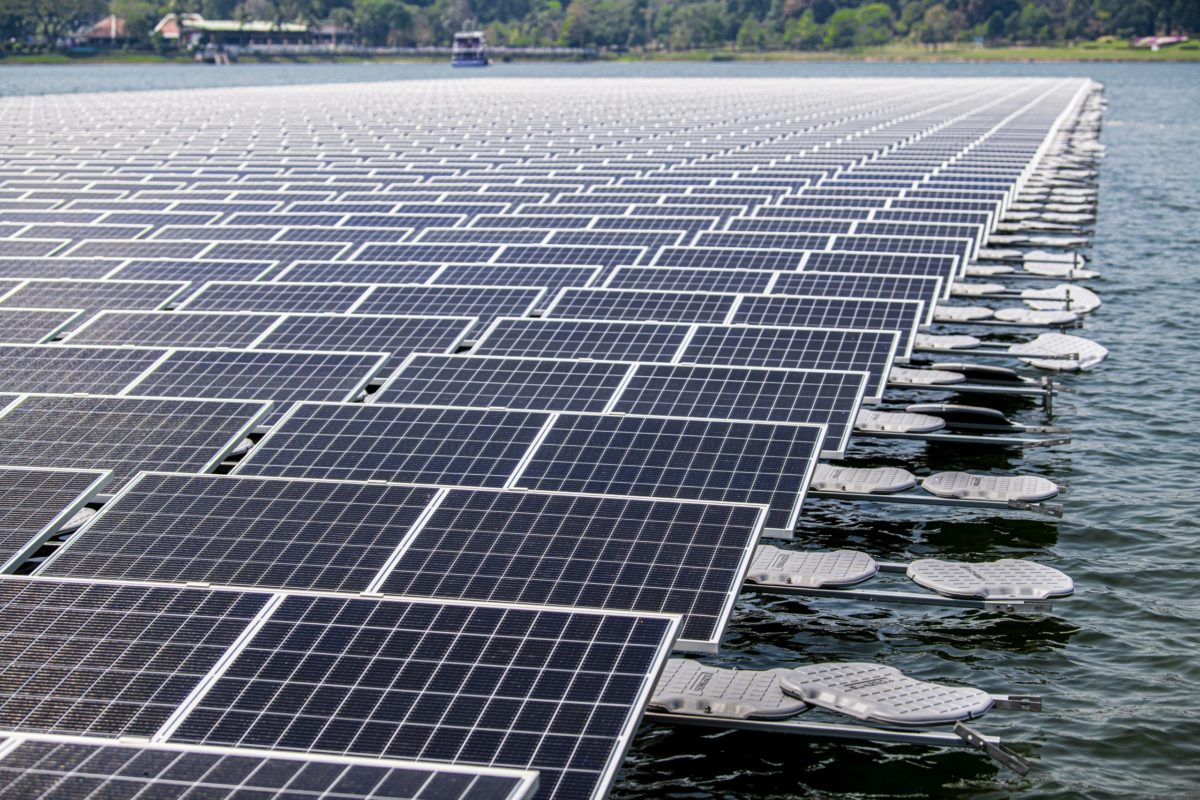To achieve its environmental goals, Thailand is making rapid strides towards reducing carbon dioxide emissions, Relying on the smart technology it recently integrated into the floating solar project, which employs two different modes of electricity generation, One via floating solar panels and the other via hydropower within the Serendhorn dam project, With the aim of improving the management of the energy system and meeting the needs of the population.
The issue of climate change is one of the most important challenges of the twenty-first century. Taiwan is one of the most vulnerable countries to climate threats due to the possibility of increased flooding, high rainfall intensity, losses in the agricultural sector and the unpredictability of monsoons. Considering the seriousness and severity of environmental changes that threaten nature and human life, Many of the world's governments are taking serious steps toward carbon neutrality in an effort to reverse its negative impacts. Foremost among them is the replacement of non-renewable energy sources with clean ones from natural sources such as sun, water and wind, Employing technological innovations to manage these processes, These technologies have been widely deployed across other Asian countries such as Singapore, Malaysia and the Philippines.
In this context, The Electricity Generating Authority of Thailand is leveraging hydro surfaces to create electric power projects. DEWA collaborated with Siemens to establish the world's largest hybrid power project within the Serendhorn Dam. to enhance the country's efforts towards achieving its climate goals for this decade as part of its Nationally Determined Contributions, which is imposed by the Paris Agreement. Fossil fuels continue to dominate Taiwan's energy sector and are a major carbon emissioner, It makes up nearly three-quarters of the country's total carbon footprint. However, the growth of renewable energy projects is still in its infancy. Solar energy, for example, which is ranked as the cheapest source of electricity ever, needs large areas and occupies land that can be used for agriculture or as wildlife habitats.
But the Serendhorn Dam project with hybrid energy sources is one innovation that is helping to address the lack of space for solar farms. 144,000 separate solar panels have been installed on top of the dam's water surface. The equivalent of the area of 100 football fields. As this water area is usually not well exploited, Except for its service for local fishing purposes. The dam and solar system share transmission grid lines and transformers. Through this mechanism, Solar panels can generate electricity during the day, While the dam generates hydroelectric power at night, It is electricity that is generated by taking advantage of the flow of water. This project does not harm the livelihood of local fishermen, who can fish on the surface of the dam water even after installing floating solar panels.
The project is based on the use of smart technology to generate energy from renewable sources such as solar and hydroelectric energy around the clock in a balanced manner, The facility uses an application to manage micro-electricity networks, It will install, test and operate control systems, You will also download a program to improve energy management, It is a cloud-based application that helps invest energy resources more efficiently by displaying live data for hybrid power distribution, Produced by solar and water energy together, on the Settings panel. Operators can use this panel to monitor the status of electrical equipment, the quantities of power generated and production forecasts, As well as rates of temperature, humidity, pressure and other important variable factors.
Studies have shown that this technique, Any floating power panels, Helps to generate more energy compared to ground installations or solar systems installed on the roofs of buildings, Thanks to the cooling effect achieved by the water under the panels, This enhances the efficiency of systems in generating electricity by up to 12.5%.
The project can generate 45 MW of peak capacity to complete existing dam operations, after which, It can generate another 36 MW and supply electricity to three provinces. Floating solar cells will also save cost and save land outside the dam for other purposes. Technology solutions will help manage electricity more efficiently and meet the growing needs of users.
There is no doubt that this project contributes to promoting Thailand's transition to alternative energy sources. Thailand relies on natural gas to produce most of its energy. In addition to coal plants, which produce 20% of them, It currently plans to close it once an alternative to renewables is secured that will offset the cost required to terminate previous contracts. It also seeks to halt the expansion of new projects and LNG infrastructure terminals in the future.
Floating solar panels offer the opportunity to take advantage of major water projects that occupy vast areas of land. Some areas of Thailand suffer from a scarcity of free land suitable for renewable energy projects. An example is the Serendhorn Dam, which began four decades ago to generate hydropower and provide irrigation water to the surrounding area in the Ubon Ratchathani district. which suffers from the scarcity of vacant land and the high cost of its investment, This has limited the authorities' ability to establish similar projects; and hindered the development of renewable energy infrastructure in general, The dam surface was left unexploited except for its limited use for local fishing.
Today, the government plans to launch similar projects in 9 dams distributed throughout the country with a total capacity of more than 2,700 megawatts. It is looking forward to providing it with another 5,000 megawatts, This is to increase the proportion of renewable energy to 30% of total energy consumption by 2037.
Through these projects, The country will be able to achieve energy stability amid economic, social and environmental changes, As part of its quest to address climate change and achieve carbon neutrality.
References:
https://www.weforum.org/agenda/2021/04/floating-solar-farms-lakes-threatened-climate-change






